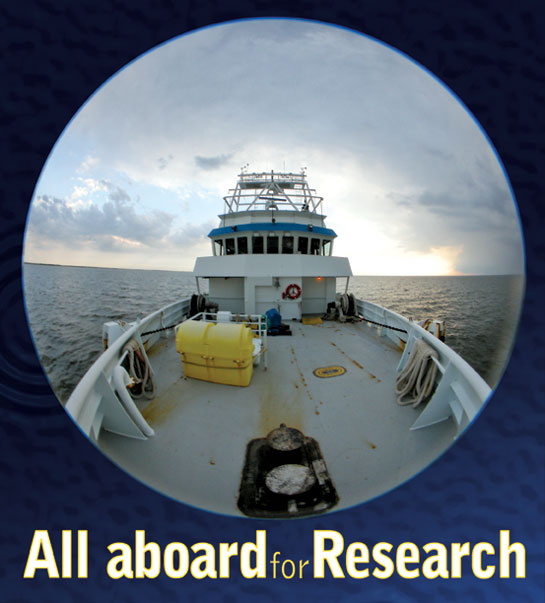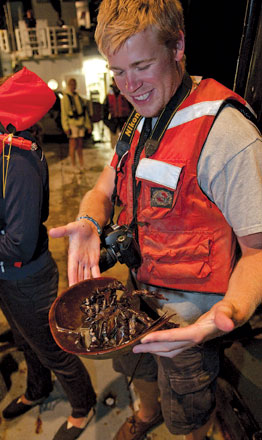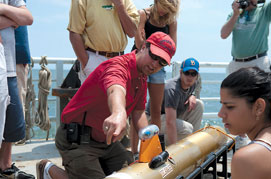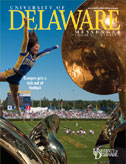
When a group of 10 high school students came to the University last summer to take an in-depth look at the Delaware Bay, the aspiring marine scientists were able to make use of state-of-the-art research facilities—including one that floats.
The teens, who attended a two-week camp hosted by the College of Earth, Ocean, and Environment and Delaware Sea Grant College Program, conducted research that included a trip aboard the University’s Research Vessel Hugh R. Sharp. The 146-foot ship was christened in mid-2005 and arrived in Delaware in early 2006 after a series of sea trials and a voyage from the Pacific Northwest shipyard where it was built.

The Hugh R. Sharp, which can stay at sea for about 18 days, is used by UD and other researchers primarily to explore the Delaware and Chesapeake bays and adjacent coastal waters, with occasional work as far north as the Gulf of Maine and as far south as Florida. With its clean, quiet, energy-efficient operation and cutting-edge technology on board, the ship replaced UD’s flagship R/V Cape Henlopen, which had been in continuous service since 1976, averaging 180 days a year at sea.
College of Earth, Ocean, and Environment Dean Nancy Targett has called the Sharp “a remarkable addition to the U.S. oceanographic research fleet [and] a state-of-the-art platform for exploring and sampling the coastal ocean.” The ship is a member of the U.S. academic research fleet, operating through the University-National Oceanographic Laboratory System, a consortium of academic institutions and national research labs.
For scientists and students, the research vessel has modern laboratories on board and the capability to carry two additional portable labs. Thanks to its modular design, it is capable of supporting a wide range of marine disciplines, including chemical, geological, physical and biological sciences, as well as acoustics, fisheries and marine mammal research. When it sets sail, it generally carries a crew of six and a technician, in addition to the research team of up to 20 scientists.

The high school campers who set sail during the summer were able to see the equipment and take part in some research. For one project, they helped Doug Miller, associate professor of oceanography, dredge the ocean floor and got to meet all the creatures once the net came to the surface.
“We saw a ton of horseshoe crabs,” said camper Jason Truong of Philadelphia.
The students also learned about the University’s autonomous underwater vehicle, a piece of equipment operated by Art Trembanis, assistant professor of geology, which glides underwater and gathers such information as water quality data. Before the research cruise, the campers had worked in groups to build their own remotely operated vehicles that could use an underwater video camera to study life on the ocean floor.
“We learned how sophisticated and really cool all the technology is behind all the science,” said Connor Armstrong. This year was the second time the camp has been offered.





